 Expat Corner
Expat Corner

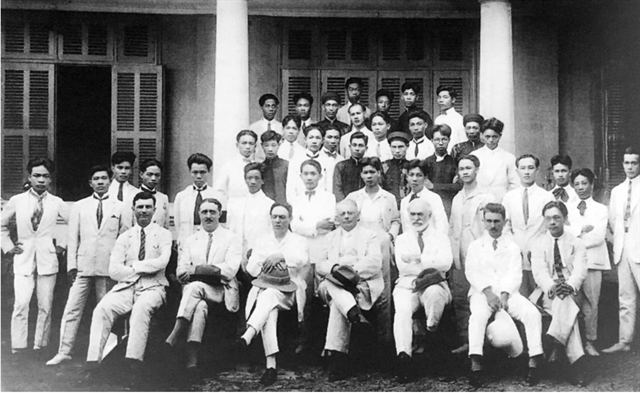 |
| Teachers and students of Indochina School of Fine Arts, now called the Việt Nam University of Fine Arts. File Photo courtesy of the VNUFA |
HÀ NỘI – A scientific workshop was held on October 24 at the Việt Nam University of Fine Arts (VNUFA) in the centre of Hà Nội honouring great contributions of the school to the cause of national historical and art development over the last nearly ten decades.
The workshop, Trường Mỹ Thuật Đông Dương và Sứ Mệnh Lịch Sử (Indochina School of Fine Arts and Historical Mission) organised by the VNUFA, is part of a series of events to celebrate the 100th anniversary of the school's establishment and development (1925-2025).
VNUFA was formerly known as the Indochina School of Fine Arts and has through the years, attendees were told, been been hugely significant in terms of being a cradle for Vietnamese art.
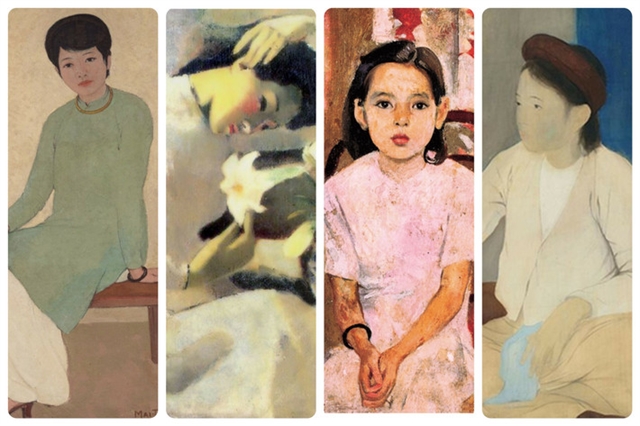 |
| Some of the paintings by artists who have graduated from the Indochina School of Fine Arts. Photo courtesy of the VNUFA |
Through diverse perspectives of the school's operation during period 1925-1945 and the following years, the event presented 20 scientific researches, commentaries and reports by Vietnamese and foreign scholars, artists and critics, in the spirit of respecting history and science.
Discussions focused on highlighting the school's 'historical mission', its role and contributions to Vietnamese fine arts, at the same time reviewing its historical and cultural values in the country's modern fine arts development.
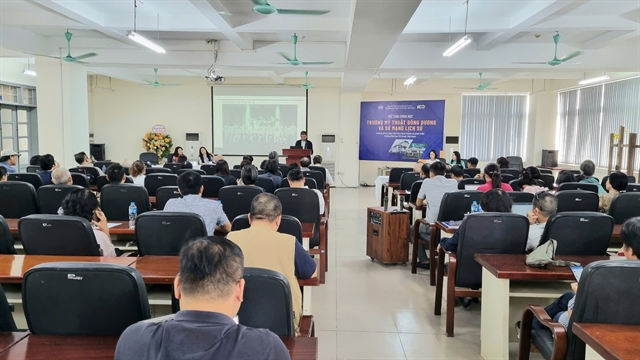 |
| The scientific workshop was held on Thursday at the Việt Nam University of Fine Arts (VNUFA) in the centre of Hà Nội. Photo arttimes.vn |
The presentations helped clarify various contents, such as the background of the formation and mission of the Indochina School of Fine Arts, its educational viewpoint and spirit of students and lecturers in 'absorbing' French cultural style on the basis of Vietnamese culture.
Speakers also focused on discussing new artistic styles and materials that generations of teachers and students have applied during their training and studying through different periods of time, the influence of aesthetic concepts and training methods of the Indochina School of Fine Arts on the historical process of the VNUFA, as well as its contribution to modern Vietnamese fine arts.
Opening the workshop, Dr Đặng Thị Phong Lan, Vice Principal of the VNUFA explained that the school's name has been changed through different periods of time: from the Indochina School of Fine Arts, College of Fine Arts and Art Appliance, Indochina College of Fine Arts, College of Fine Arts, Intermediate School of Fine Arts, Việt Nam College of Fine Arts, to Hà Nội University of Fine Arts and now called Việt Nam University of Fine Arts.
Although its name was changed, the mission of the school has always been to maintain its core values, according to Lan.
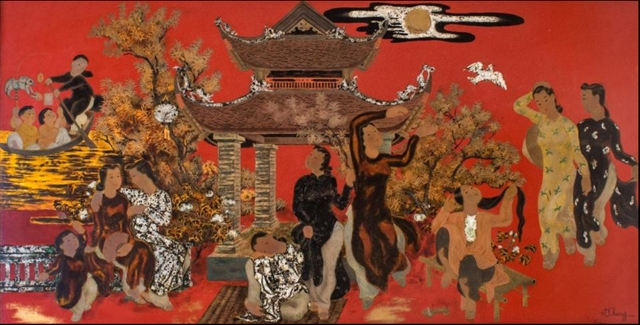 |
| 'Autumn moonlight', a lacquer painting by Nguyễn Tiễn Chung (1914-1976). |
"Creativity is the essence. Creativity always connects tradition and modernity, inherits and promotes the cultural identity and Vietnamese people. The process of formation and development of the school is always associated with modern Vietnamese fine arts and the historical contexts and tasks of the country. This shows the significant meaning and role of the Indochina fine art period in the mission and history of the VNUFA," she said.
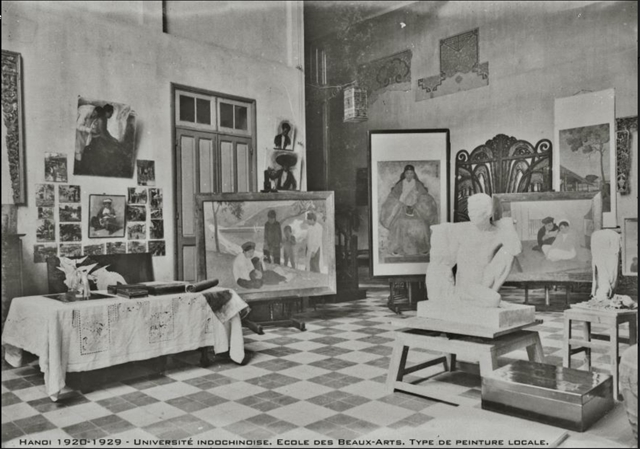 |
| A display at the Indochine School of Fine Arts between 1920-1929. Photo courtesy of the VNUFA |
The vice principle also affirmed the great influence and impact of the Indochina School of Fine Arts in creating a milestone as an important 'turning point' for traditional fine arts into a new era, in which the country's fine arts develop towards a national - modern direction integrating with the world.
Meanwhile, senior researcher Legostaeva Albina from Department of Far East, Southeast Asia and Oceania Art, Russia, highlighted the crucial role of the school in the formation and development of modern Vietnamese fine arts.
"It has been 100 years since the founding of the Indochina School of Fine Arts in Hanoi, which has trained many of Vietnamese finest masters...it seems to me the most important and significant fact that it was the school that gave Vietnamese masters the opportunity to speak with the modern world in the same artistic language, in search of whatever new forms they found in different periods of their work," said Albina.
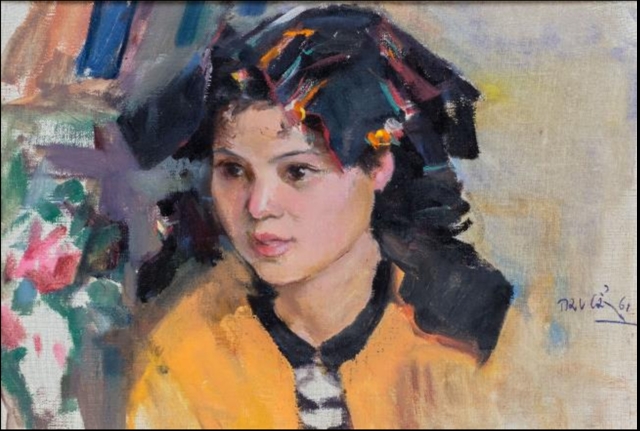 |
| 'Tày Girl', oil on canvas by Trần Văn Cẩn (1910-1994), one of the most famous artists who graduated from the Indochina School of Fine Arts during 1925-1945. |
Regarding her research about the school, she said: "The 20th century has become a time of powerful tectonic shifts in world art and the alignment of platforms as the artistic basis for multidirectional concepts, currents, forms, techniques, denial and acceptance, numerous adaptations and the establishment of all kinds of cross-cultural intersections.
"Similar phenomena can be traced in various fields, for example, in linguistics, when the existence of many dialects of one language affects its alignment for common understanding, while enriching it in various ways."
Phạm Trung, another researcher at the workshop said the Indochina School of Fine Arts, is considered as the cradle that trained the first generations of painters, sculptors, and architects in Việt Nam.
"The artistic achievements and cultural imprints left by the senior artists in over 20 years of the school in the history of modern Việt Nam are enormous, they are the humanistic beauties that shine on their own.
"They are the spiritual and cultural values that still remain today in social aesthetics. They are the imprints and lasting influences on the aesthetics of many generations of painters throughout the country in later periods and also the generations of famous painters in the renovation period of Vietnamese fine arts”, said Trung. VNS




